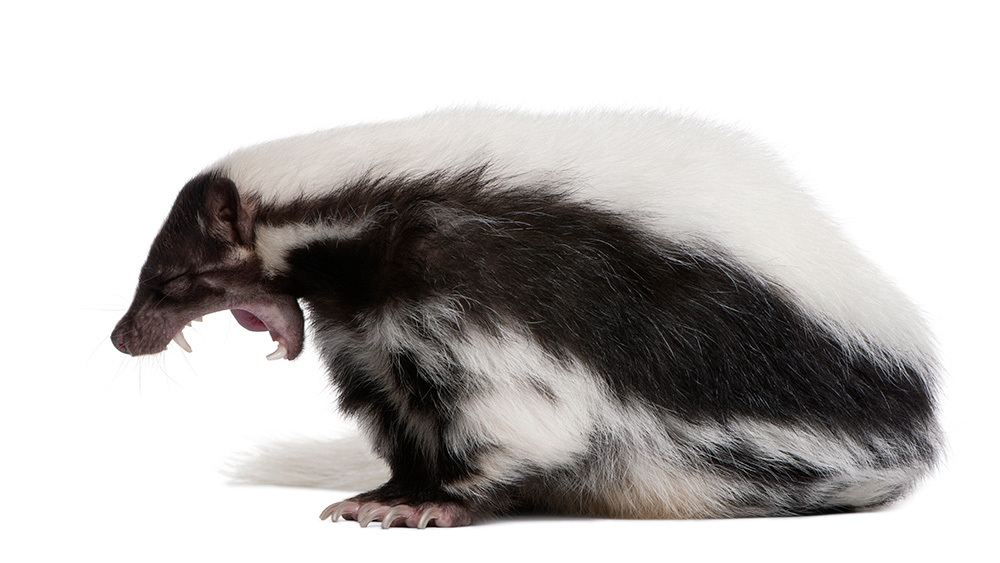While we often think of a skunk’s behind as its primary evolutionary advantage, it isn’t the only tool in their arsenal. Skunks are also equipped with strong, curved claws. These claws help them navigate their environment and hunt for food. Today, we will explore how a skunk’s claws assist them in suburban environments.
Claws Meant for Digging
Skunks have claws that are made for digging. They can use their claws to dig their dens. In suburban areas, they may dig under sheds, patios, and other man-made structures to have better protection from the elements. Man-made shelters also offer extra protection against their predators, such as foxes.
Access to Food
Their claws can also help them in foraging for food. They can rake dirt out of the way to access grubs and bugs out of the soil. These foraging spots can look like cone-shaped holes in your lawn or garden. Additionally, some skunks will use their claws to dig through weaker trash bins. While skunks can knock over trash cans, those made of softer plastics are no match for their sharp nails.
Can Skunks Climb?
While all skunks have some climbing capabilities, the striped skunk, which is most common across the US, is not an adept climber. Spotted skunks, however, are much better at climbing. But they are not typically found in NY and NJ. The striped skunk may be able to climb some surfaces, such as wooden boards or mesh fences, with relative ease, but will struggle to get up a tree. In most cases, they will try to knock over or dig through a garbage can rather than climb up it.
Deterring Skunks From Your Property
There are several ways to make your property less inviting to skunks and other wild animals. Firstly, keep your lawn trimmed and short. This will provide fewer hiding places for animals. Shorter lawns also minimize bug activity, making them less fertile hunting grounds. Invest in sturdy, animal-proof garbage bins. Secure them to a wall or fence if possible to make them even harder to knock over. If you have fruit trees or bushes, keep the ground clear of fallen fruit.
You can also install mesh barriers in areas that skunks may dig. Use galvanized steel mesh that goes about 1-1.5 feet down, and then a foot out from the base of the structure. This can be used around your patio, shed, retaining walls, or raised garden beds. The mesh will prevent burrowing animals like skunks from being able to make suitable burrows.

